Why is my Panasonic CS-S9RKV emitting water or steam outside?
- RrachelhahnAug 17, 2025
The emission of water or steam from the outdoor unit of your Panasonic Air Conditioner is due to condensation or evaporation occurring on the pipes.
Why is my Panasonic CS-S9RKV emitting water or steam outside?
The emission of water or steam from the outdoor unit of your Panasonic Air Conditioner is due to condensation or evaporation occurring on the pipes.
Why does my Panasonic CS-S9RKV Air Conditioner delay starting after being restarted?
If the operation of your Panasonic Air Conditioner is delayed a few minutes after restarting, this delay is a protection mechanism for the unit’s compressor.
Why is the TIMER indicator always on in my Panasonic CS-S9RKV Air Conditioner?
If the TIMER indicator is always on in your Panasonic Air Conditioner, it means the timer setting is set to repeat daily once it has been initially configured.
Why does the POWER indicator blink on my Panasonic Air Conditioner before it turns on?
If the POWER indicator blinks before your Panasonic Air Conditioner is switched on, this is a preliminary step in preparation for operation when the ON timer has been set.
Why is my Panasonic CS-S9RKV Air Conditioner making a louder noise outside during AUTO-X?
The louder noise you hear from the outdoor unit of your Panasonic Air Conditioner during the initial operation of AUTO-X is because the compressor and fan rotate at a higher speed. This is done to boost cooling performance during the start of operation.
What causes the cracking sound in my Panasonic CS-S9RKV?
The cracking sound you hear during the operation of your Panasonic Air Conditioner is caused by temperature changes leading to the expansion and contraction of the unit.
Why is mist coming out of my Panasonic Air Conditioner?
The mist emerging from the indoor unit of your Panasonic Air Conditioner is a condensation effect resulting from the cooling process.
What causes the water flowing sound in my Panasonic Air Conditioner?
The water flowing sound you hear during the operation of your Panasonic Air Conditioner is due to the flow of refrigerant inside the unit.
Why does the fan stop sometimes on my Panasonic CS-S9RKV?
The indoor fan in your Panasonic Air Conditioner stops occasionally during automatic fan speed setting to help remove surrounding odors.
Why does my room smell bad when using my Panasonic CS-S9RKV?
A peculiar odor in the room when using your Panasonic Air Conditioner may be due to a damp smell emitted by the wall, carpet, furniture, or clothing.
Instructions for inserting AAA or R03 batteries into the remote control for initial setup and operation.
Steps to set the current time on the remote control for accurate timer functions.
Guide to selecting modes, starting/stopping operation, and setting temperature.
Instructions for using the auto OFF/ON button on the unit when the remote control is unavailable.
Important warnings and precautions for the safe installation and operation of indoor and outdoor units.
Precautions regarding the safe handling and use of the remote control, especially concerning batteries.
Essential safety guidelines for the power supply cord and connection to prevent hazards.
Explanation of the i AUTO-X mode for rapid cooling and comfort, including its features and limitations.
Guide to choosing between AUTO-X, COOL, DRY, and AUTO COMFORT modes for different needs.
Details on activating QUIET mode to reduce airflow noise for a more peaceful environment.
Instructions on how to select and adjust the fan speed for optimal airflow and comfort.
Explanation of how ECONAVI optimizes energy consumption based on room conditions.
Details on the nanoe-G function for purifying air and deactivating viruses/bacteria.
Guide to adjusting the airflow direction using the AIR SWING function for better air distribution.
Instructions for setting ON and OFF timers to automate unit operation.
Explanation of how the human activity sensor detects presence and activity to save energy and maintain comfort.
Details on how the sunlight sensor adjusts temperature to save energy based on light intensity.
Recommended operating temperature ranges for COOL and DRY modes for optimal performance.
Instructions for cleaning the indoor unit, front panel, and air filters.
Guidance on cleaning the nanoe-G generator with a dry cotton bud.
Steps for inspection and preparation when the unit is not used for an extended period.
Procedure for activating nanoe-G for moisture removal and power disconnection for extended non-use.
List of normal operational phenomena that do not require servicing.
Guidance on self-checks for common operational problems before contacting a service dealer.
Conditions requiring immediate consultation with an authorized dealer.
Instructions on how to retrieve error codes using the remote control for troubleshooting.
Instructions for inserting AAA or R03 batteries into the remote control for initial setup and operation.
Steps to set the current time on the remote control for accurate timer functions.
Guide to selecting modes, starting/stopping operation, and setting temperature.
Instructions for using the auto OFF/ON button on the unit when the remote control is unavailable.
Important warnings and precautions for the safe installation and operation of indoor and outdoor units.
Precautions regarding the safe handling and use of the remote control, especially concerning batteries.
Essential safety guidelines for the power supply cord and connection to prevent hazards.
Explanation of the i AUTO-X mode for rapid cooling and comfort, including its features and limitations.
Guide to choosing between AUTO-X, COOL, DRY, and AUTO COMFORT modes for different needs.
Details on activating QUIET mode to reduce airflow noise for a more peaceful environment.
Instructions on how to select and adjust the fan speed for optimal airflow and comfort.
Explanation of how ECONAVI optimizes energy consumption based on room conditions.
Details on the nanoe-G function for purifying air and deactivating viruses/bacteria.
Guide to adjusting the airflow direction using the AIR SWING function for better air distribution.
Instructions for setting ON and OFF timers to automate unit operation.
Explanation of how the human activity sensor detects presence and activity to save energy and maintain comfort.
Details on how the sunlight sensor adjusts temperature to save energy based on light intensity.
Recommended operating temperature ranges for COOL and DRY modes for optimal performance.
Instructions for cleaning the indoor unit, front panel, and air filters.
Guidance on cleaning the nanoe-G generator with a dry cotton bud.
Steps for inspection and preparation when the unit is not used for an extended period.
Procedure for activating nanoe-G for moisture removal and power disconnection for extended non-use.
List of normal operational phenomena that do not require servicing.
Guidance on self-checks for common operational problems before contacting a service dealer.
Conditions requiring immediate consultation with an authorized dealer.
Instructions on how to retrieve error codes using the remote control for troubleshooting.
| Type | Split System |
|---|---|
| Cooling Capacity | 2.5 kW |
| Heating Capacity | 3.2 kW |
| Power Supply | 220-240 V, 50 Hz |
| Refrigerant | R410A |
| Noise Level (Outdoor Unit) | 48 dB(A) |
| Indoor Unit Weight | 9 kg |
| Outdoor Unit Dimensions (W x H x D) | 780 x 540 x 289 mm |
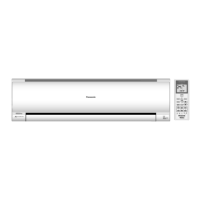
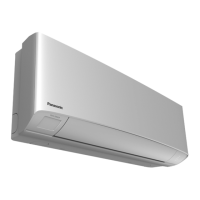

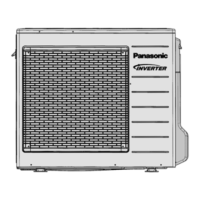
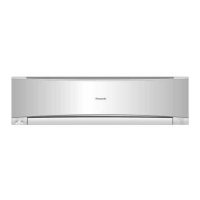
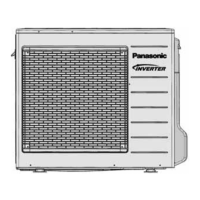
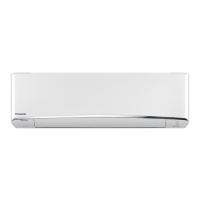
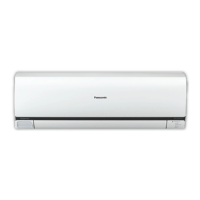
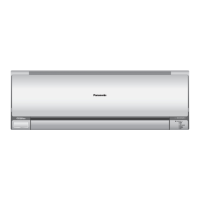
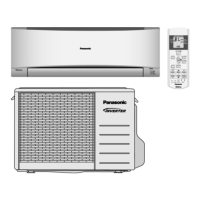
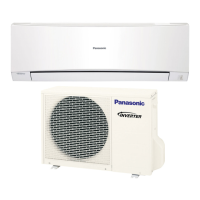
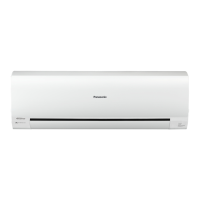
